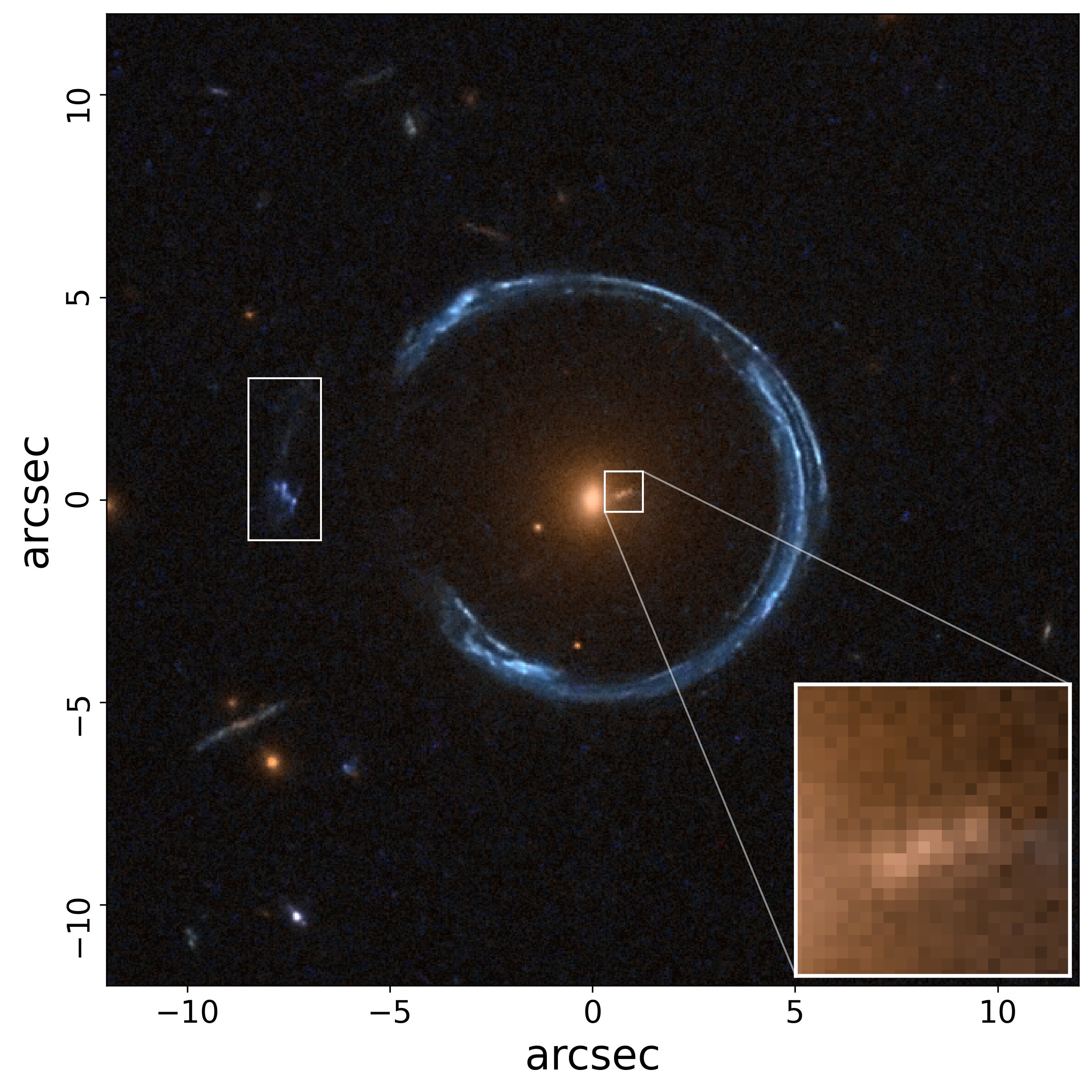👀 Not just Supermassive, but Ultramassive! Here is the most massive black hole in the known Universe!
Published by Adrien,
Source: Monthly Notices of the Royal Astronomical Society
Other Languages: FR, DE, ES, PT
Source: Monthly Notices of the Royal Astronomical Society
Other Languages: FR, DE, ES, PT
Follow us on Google News (click on ☆)
Researchers have identified this giant in a galaxy nicknamed the Cosmic Horseshoe, whose mass warps spacetime so strongly that it bends the light from a background galaxy into a characteristic ring.

Image of the Cosmic Horseshoe highlighting the light distortion caused by the central black hole.
Credit: NASA/ESA/Tian Li(University of Portsmouth)
Thanks to an innovative combination of gravitational lensing and stellar kinematics, the team was able to precisely measure a black hole equivalent to 36 billion times the mass of our Sun. This method, more reliable than estimates based on matter accretion, allows the study of even "dormant" black holes that do not actively emit radiation.
This technique enables the exploration of the distant Universe, where galaxies appear too small to directly observe their central regions. By analyzing both the path of the deflected light and the rapid motions of stars near the black hole, scientists have confirmed its existence and its phenomenal mass. Professor Thomas Collett emphasizes that this approach significantly reduces the usual uncertainties of indirect measurements.
The host galaxy itself is a "fossil group," the result of the merger of multiple galaxies over time. All the original supermassive black holes are thought to have merged to form this single, ultramassive black hole, offering a glimpse into the final state of galactic evolution.
The implications are vast: understanding how black holes influence star formation in their galaxies. When they become active as quasars, they release titanic energy that prevents gas clouds from condensing into new stars. Our Milky Way, with its central black hole of 4 million solar masses, could experience such an awakening during its future merger with the Andromeda galaxy.
Researchers now plan to use the Euclid space telescope to detect more of these hidden giants, in order to map their role in halting star formation and better understand the links between black holes and galaxies.
Gravitational lensing
Gravitational lensing is a phenomenon predicted by Einstein's theory of general relativity, where the mass of a celestial object curves spacetime and deflects light passing nearby. This acts as a cosmic magnifying glass, amplifying and distorting the image of background objects, allowing astronomers to study otherwise invisible regions.
In the case of the Cosmic Horseshoe, the massive galaxy bends the light so much that it forms an almost perfect ring, called an Einstein ring. This effect not only reveals the presence of an extremely massive object, but also allows its gravitational influence to be measured with great precision.
Gravitational lenses are classified into three types: strong, weak, and microlensing. Strong lensing, used here, produces multiple images or visible arcs, while the other types require statistical analyses to detect subtle distortions.
This technique has become a fundamental tool in cosmology, enabling the exploration of dark matter, exoplanets, and now supermassive black holes, by exploiting the curvature of spacetime as a natural telescope.
Supermassive and ultramassive black holes
Supermassive black holes are cosmic objects with masses ranging from millions to billions of times that of the Sun, residing at the center of most galaxies. They likely form from the collapse of primordial massive stars or through the accretion of matter over cosmic time.
Ultramassive black holes, like the one discovered, represent the upper end of this scale, with masses exceeding 10 billion solar masses. Their existence raises questions about the limits of black hole growth and the processes that allow such masses to be reached.
Unlike stellar black holes formed by the collapse of stars, supermassive and ultramassive black holes are linked to galaxy evolution. Their energy jets and powerful winds can regulate star formation by heating or expelling the gas needed for the birth of new stars.
The discovery of dormant black holes, like this one, is particularly interesting because it allows the study of their pure mass via gravity, without the biases introduced by luminous activity, thus offering a clearer view of their role in galactic evolution.